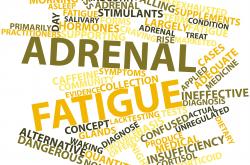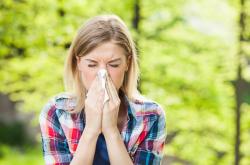Carried On The Wind: Airborne Allergens
Many cases of fatigue are caused by allergies from airborne substances or reactions to climatic conditions. What are the signs and symptoms of these conditions, and what can you do if you suffer from them?
Signs and symptoms of airborne allergies
Almost any system in the body can be affected by exposure to airborne substances. They cause fatigue in people, who are sensitive to them. Additional signs and symptoms include:
- Headache
- Rashes
- Wheezing
- Infections
- Problems with concentration
- Chronic muscle pain
- Insomnia
- Confusion
- Memory loss
- Depression
- Hyperactivity
- Earaches
- Numbness
- Dizziness
What are the most common causes of airborne allergies?
The most commonly found airborne substances, which can cause fatigue in susceptible individuals, are:
Mold and fungi
These can be present in various parts of the home. You may feel better in some rooms, and worse in others. There are quite a few different substances that need to be tested for, including: cladosporium, epioccum, penicillium, acremonium, aureobasidium, rhodotrula, pitheuyces. The molds and fungi need to be removed from your home, or you need to consider relocating.
Pollens, grasses, animals
One of the key indicators of pollen or grass allergies is that they are seasonal. Most of them occur in the summer months, so if you find you are tired during this time, but not during the winter, you should consider having a blood test, such as the ELISA/ACT or IgE RAST. Both these tests measure the response in the blood to offending substances.
If you have a pet, such as a cat, dog, rabbit, bird etc, and you are suffering from tiredness, rashes or congested lungs, you may want to send the animal away for a while and see if you feel better. If you do, this may suggest that your pet is triggering an allergic reaction.
Outdoor chemical pollutants
Many cities have varying forms of pollution such as ozone, sulfur dioxide, carbon monoxide, nitrogen dioxide, and organic chemicals. Some cause fatigue directly, other indirectly through creating oxidative stress, which uses up our stores of anti-oxidant nutrients.
Indoor chemical pollutants
The air in our houses often contains toxic chemicals (usually in small concentrations). Many household substances, for example cleaning materials and building supplies, contain chemicals such as formaldehyde, benzene, toluene, and xyklene. All of these can trigger fatigue.
Which climatic factors cause tiredness?
As well as allergy causing substances, climatic factors can also cause fatigue. They include:
Excess humidity
Humidity in the air makes it more difficult for the body to lose heat by sweating, which can significantly add to tiredness.
Deficient humidity
If the atmosphere is too dry, this can dry out the mucous membranes and lead to sinus congestion and blocked-up noses. Dry air is common in centrally heated homes during the winter, and also in places, such as deserts and very dry lands.
Deficiency in negative ions
In some climates, strong winds blow for weeks. These winds have been depleted of negative ions, which can lead to fatigue in sensitive people. Many buildings have high concentrations of positively charged particles, which can be remedied by getting a negative ion generator in each room.
Excessive heat
If you are too hot for too long, you can become dehydrated and stressed, which eventually leads to fatigue. Make sure that you rest in hot climates and drink plenty of water.
Prolonged cold and dark
Living in a cold climate with a long, dark winter can cause lethargy and tiredness. One of the results of prolonged deficiency of natural light can be SAD (Seasonal Affective Depression). Many people improve with breaks in sunnier, warmer climates.
Air-conditioned buildings
Air-conditioning can cause headache, lethargy and upper respiratory tract (throat and nose mucous membrane) symptoms.
What are the laboratory tests for reactions to airborne substances?
There are three categories of tests:
- Mold plates placed in the various rooms of your house to see what molds are present and how many colonies there are of each one.
- Intradermal testing for sensitivity to environmental substances e.g. grasses, molds, pet dander etc.
- Blood tests for nutrients and environmental sensitivities can also be carried out.
To sum up
Both climate conditions and airborne allergies can create and perpetuate tiredness. It may be necessary to check both the person and their environment in order to get a satisfactory diagnosis of the problem.












Leave a comment